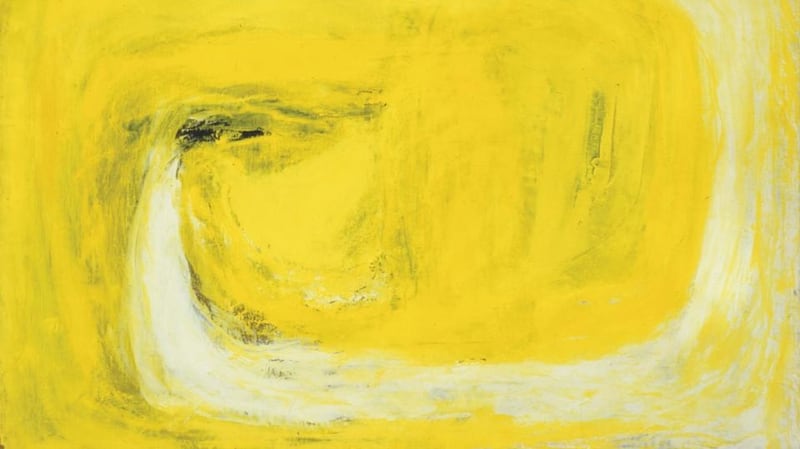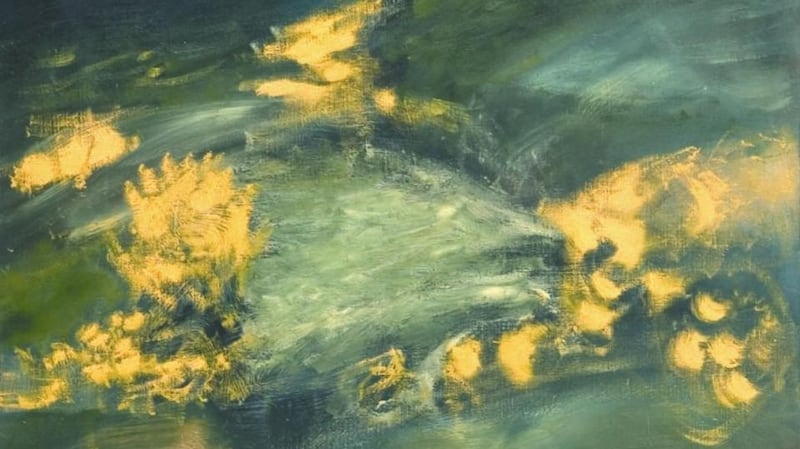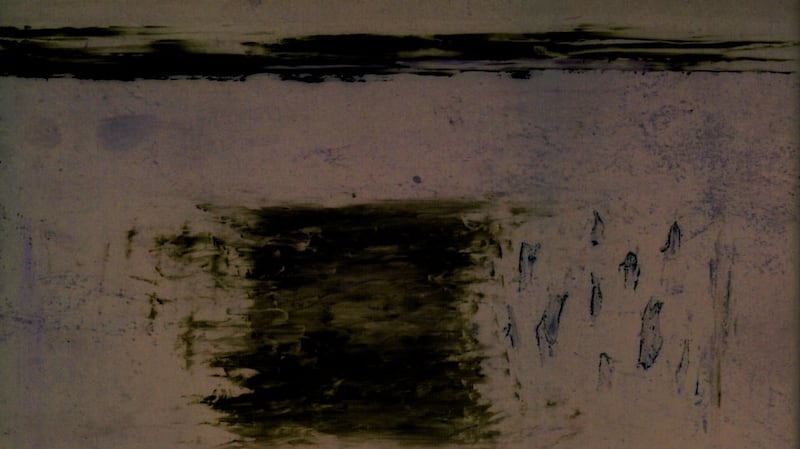Seán McSweeney, who has died aged 82, was one of Ireland’s most distinguished artists of the last half-century, something made more remarkable by the fact that he was almost entirely self-taught.
An elected member of Aosdána, three themes ran through his life with a consistency that is unmistakable: his love of the Irish landscape; his very distinct, indeed unique style as a painter; and his disdain for artistic fashion and academic authority in art, including the Royal Hibernian Academy (RHA) which, ironically, eventually elected him as an honorary member, something of which, in maturity, he acknowledged.
His radicalism may have had something to do with the republicanism of his father, Paddy, and his uncle, Jack McSweeney, from Clongill near Kells in Co Meath, both master painting and decorating craftsmen who had been interned during the Civil War. It was probably also informed by his upbringing in a tenement, shared by his family with several other families, on Synnott Place off Dorset Street in Dublin’s inner city.
0 of 4
Ballyconnell
He was the second-youngest of six children. His mother, Mary Ann Conway, was from Ballyconnell in north Co Sligo, where he spent many childhood summers with a maternal uncle and aunt, a fact that was to have profound consequences for his art – in 1984, he moved there with his young family.
His father’s profession deeply influenced him. Paddy McSweeney, described by this newspaper’s former art critic Brian Fallon, in an essay in 1996, published as a book of essays celebrating McSweeney’s art by Gandon Editions, as “a gifted amateur painter” who had attended night classes at the old Dublin Metropolitan College of Art (now the NCAD), died tragically in an industrial accident at Ringsend ESB power station when Seán was aged just five. However, he bequeathed to Seán many specialised instruments in his paint box and his uncle Jack, later, taught the young McSweeney techniques both brothers had used in their work together.


McSweeney found school, at Scoil Cholmcille, Marlborough Street, and later St Canice’s CBS, boring and at 16 he went to work with Frank Vickerman, a wool merchant on Usher’s Quay in Dublin. This was significant, as Vickerman was a collector of the work of Jack B Yeats, one of the early influencers of McSweeney’s style.
There were other influences, first encountered at the Dublin Municipal Gallery of Modern Art – now the Hugh Lane Gallery – on Parnell Square. There he saw the work of Paul Henry and other great Irish contemporary painters, McSweeney telling the late Dermot Healy in an interview for Force 10 magazine in 1993: “I used to just stand there and look, and look and that’s how I began. By looking.”
Another significant early influence was the printmaker, and lecturer at the College of Art, Terry Gayer. Gayer held private classes at various locations in the city, which McSweeney attended. In his interview with Healy, the artist credited Gayer with being “one of the first to open our minds to the modern movement – Gauguin, Cézanne, Van Gogh, Braque, Picasso. It was Terry Gayer who first showed us that world.”
McSweeney first exhibited at the Belton Gallery on Cavendish Row, opposite the Gate Theatre, in 1958, aged just 23. Further group shows followed with the Living Art Group. At around this period, he met Leo Smith, owner of the influential Dawson Gallery, where McSweeney also encountered another significant early influence, Nano Reid. He exhibited for the first time with that gallery in 1962, and stayed with it even after it transformed in the late 1970s into the Taylor Galleries, holding his last group exhibition there as recently as 2017, and his last solo show there also two years earlier. His very last exhibition, The Yellow River, of paintings to accompany the work of poet Gerard Smyth, was held at the Solstice in Navan last year.
Landscapes
As a landscape artist, McSweeney’s work is characterised by an enduring concern to extract the beautiful from apparently mundane rurality, whether in Co Wicklow, to which he moved on marriage to Sheila Murphy, a photographer, in 1967, or later in Co Sligo. In his 1996 essay, Fallon compares his work in this respect to that of John Constable or the great Dutch landscape painters. Whether in his picturing of the Wicklow hills, or the bog pools and huge seas and skies of Sligo, McSweeney developed a technique combining the abstract expressionism of the 1950s of his youth with a deceptively formless, but actually rigorous brushwork, often aided by palette knives and ad-hoc materials such as old credit cards to produce almost, at times, a three-dimensional representation of his subject.


As Fallon put it in 1996: “He is fond of balance by asymmetry, he has learned to place colour areas and accents to maximum effect, but it is a balance arrived at by a mixture of intuition and experience rather than theory.” He added that McSweeney was “fastidious about his materials, and ultra-careful in his selection of paints”.
McSweeney exhibited widely outside Ireland, especially at the John Martin Gallery in London, more widely in Britain, in Austria and in Switzerland, to which he had been invited by the then Swiss ambassador to Ireland who had seen and admired his work in Dublin in the early 1990s.
Seán McSweeney is survived by his widow, Sheila, their five children Colmán, Orna, Sally, Stephen and Tadhg and by his sisters Moira and Kathleen, and his brother Paddy. His brother Noel and sister Imelda predeceased him.

















